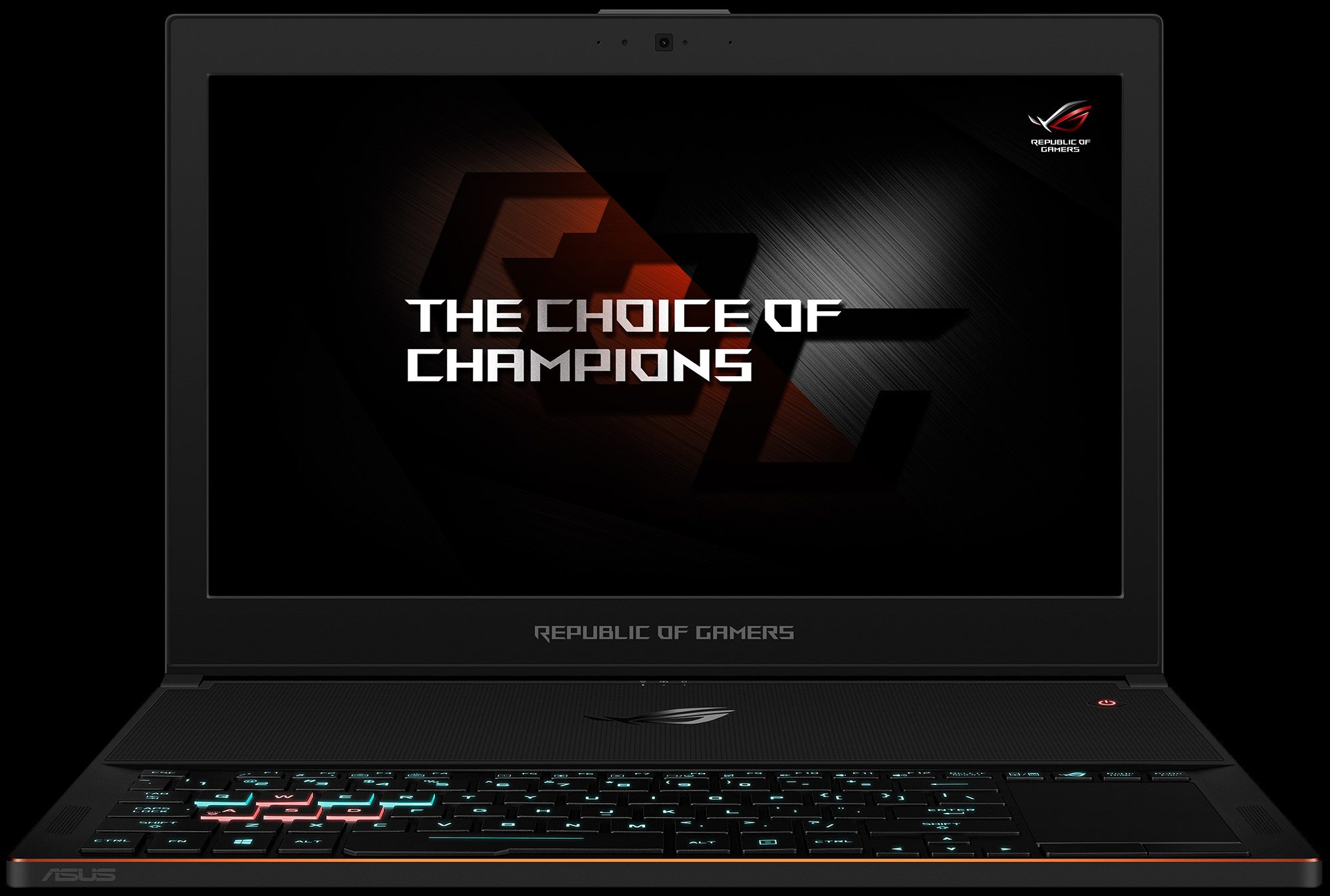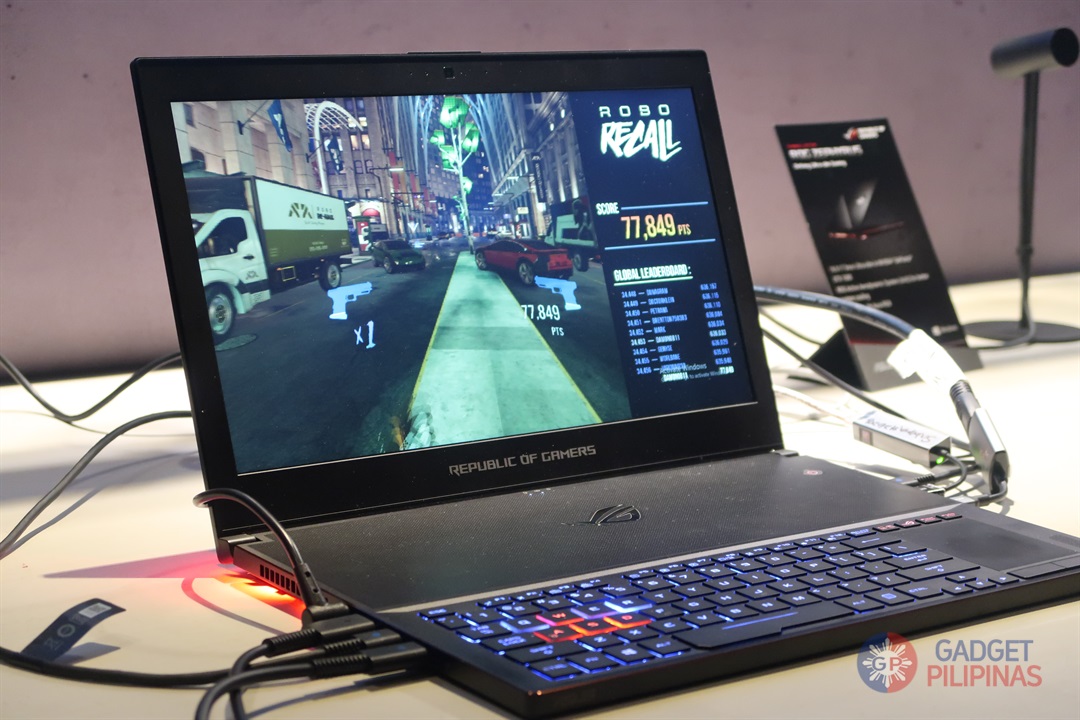The ultra-thin, powerhouse gaming laptop is finally here

Up until now, there have been two classes of
gaming laptops: big and powerful or thin and portable. Never the twain shall meet and forget about either of them being quiet while you’re gaming.
gaming laptops: big and powerful or thin and portable. Never the twain shall meet and forget about either of them being quiet while you’re gaming.
Well, now we’re entering a new generation of Max-Q laptops that Nvidia promises will be three-times thinner and faster. The Asus ROG Zephyrus GX501 stands at the forefront of this new class of gaming machine that offers the power of a desktop replacement in an ultra-portable package a little thicker than your average
Ultrabook.
Ultrabook.
As crazy as a concept that might sound, Asus pulled it off in spectacular fashion with the Asus ROG Zephyrus GX501. Save for battery life, this gaming laptop comes second to none with a sharp and innovative design, ample gaming performance, a color-rich display and amazing speakers.

SPEC SHEET
Here is the Asus ROG Zephyrus GX501 configuration sent to TechRadar for review:
CPU: 2.8GHz Intel Core i7-7700HQ (quad-core, 6MB cache, up to 3.8GHz)
Graphics: Nvidia GeForce GTX 1080 (8GB GDDR5X VRAM); Intel HD Graphics 630
RAM: 16GB DDR4 (2,400MHz)
Screen: 15.6-inch, Full HD (1,920x1,080) anti-glare, wide-view panel (120Hz refresh rate with Nvidia G-Sync)
Storage: 512GB M.2 PCIe x4 SSD
Ports: 1 x Thunderbolt 3 (USB Type-C), 4 x USB 3.0, 1 x HDMI 2.0, headset jack
Connectivity: 802.11ac Wi-Fi, Bluetooth
Camera: HD webcam
Weight: 4.85 pounds (2.2kg)
Size: 14.9 x 10.3 x 0.66-0.7 inches (37.9 x 26.2 x 1.69-1.79cm; W x D x H)
Graphics: Nvidia GeForce GTX 1080 (8GB GDDR5X VRAM); Intel HD Graphics 630
RAM: 16GB DDR4 (2,400MHz)
Screen: 15.6-inch, Full HD (1,920x1,080) anti-glare, wide-view panel (120Hz refresh rate with Nvidia G-Sync)
Storage: 512GB M.2 PCIe x4 SSD
Ports: 1 x Thunderbolt 3 (USB Type-C), 4 x USB 3.0, 1 x HDMI 2.0, headset jack
Connectivity: 802.11ac Wi-Fi, Bluetooth
Camera: HD webcam
Weight: 4.85 pounds (2.2kg)
Size: 14.9 x 10.3 x 0.66-0.7 inches (37.9 x 26.2 x 1.69-1.79cm; W x D x H)
Price and availability
The Asus ROG Zephyrus is expensive – really expensive. Priced at $2,699 or AU$3,659 (about £2,105), the configuration we’ve reviewed is highest-end version of the Zephyrus you can get.
It’s far more than we’ve ever conscionably considered spending on a 15-inch gaming laptop, especially considering increasingly more affordable models like the $1,399 (£1,499, AU$2,249) Gigabyte SabrePro 15 and $1,399 (about £1,100, AU$1,840) Acer Predator Helios 300 – though, these two options come with lesser Nvidia GTX 1060 graphics.
Of course, a big part of that price point comes down to the laptop rocking an Nvidia GTX 1080 and quad-core Intel Core i7 processor. In this regard, it’s a few hundred bucks cheaper than the equally capable $2,999 (£2,999, AU$4,029)
Acer Predator Triton 700.
Acer Predator Triton 700.
Compared to far larger gaming laptops that were once required to achieve the same level of performance, the Zephyrus also proves itself to be a bargain over the $3,999 (£3,799, AU$5,899)
Razer Blade Pro and $2,899 or £2,599 (about AU$3,770)
MSI GT73VR Titan Pro. That said, these monster machines still have their place in the computing world, if you want an overclockable CPU.
Razer Blade Pro and $2,899 or £2,599 (about AU$3,770)
MSI GT73VR Titan Pro. That said, these monster machines still have their place in the computing world, if you want an overclockable CPU.
Later this August, Asus plans on releasing a lower-end Zephyrus with half as much storage and an Nvidia GTX 1070 for $2,299 or AU$3,119 (about £1,790). This model would more directly compete with the $2,074 (£1,999, AU$3,499)
Alienware 15 R3 and Max-Q designed
MSI GS63 Stealth Pro – the latter of which has yet to be priced.
Alienware 15 R3 and Max-Q designed
MSI GS63 Stealth Pro – the latter of which has yet to be priced.
Design
We never thought it would be possible, but the Asus ROG Zephyrus GX501 really stuffs an Nvidia GTX 1080 into a 1.79cm-thick (0.7-inch) laptop. That’s not only stunningly thin for a gaming notebook, it’s slimmer than most traditional laptops, including the compact Dell XPS 15.
To efficiently cool such a svelte package, Asus came up with an innovative design, which sees the bottom panel drop down like a ramp for better airflow. The mechanism engages automatically as you open the Zephyrus, creating a 6mm gap.
That might not sound like a terribly great contribution to airflow, but Asus has engineered a high-air chamber to give this ultra-thin gaming laptop the cooling properties of a much thicker machine.
One downside to this expandable panel is it ends up feeling flimsy. The underside extension bends to the touch and there’s a slightly springy step to the laptop when your place it on a desk. That said, you won’t really notice the issue outside of carrying around the GX501 from beneath while the screen is open.
Gimmicks and accolades aside, the Zephyrus is a damn gorgeous piece of machinery. Asus has gone for a distinctly squared-off design for the metal chassis. Then, the all-black exterior with copper trim adds up to a sharp, futuristic aesthetic. The screen lid of the GX501 draws your eyes in with a uniquely geometric design coupled with a brushed aluminum finish that fans out in two directions.
Branding on gaming laptops is usually something we tend to just ignore, but the use of the prominent ROG logos over text on the exterior and interior of the laptop are nice touches, too.
Between the overall aesthetics of the laptop and its transforming design, the Zephyrus looks like a gaming laptop pulled from the future, and we love the way it looks.
Business in front, party in the back
As part of the Zephyrus design, Asus opted to move all the components and cooling system to the rear of the laptop while migrating all the inputs to the front. It’s an arrangement we’ve seen on the MSI GT83VR Titan and Razer Blade Pro, and like those previous systems, it works well enough but not without some compromises.
The keyboard feels roomy with large keys despite having to share space with the side-oriented trackpad. There’s a decent amount of travel when hitting the keys, and a soft, mechanical note to go with it. However, the Zephyrus lacks the mechanical bite we’ve experienced typing on the Acer Predator Triton 700.
Since there isn’t any room for a palm rest, Asus includes a rubber wrist rest that sits right up against the laptop’s front lip. Unfortunately, this extra accessory gets grimy very quickly – even after just a few minutes of usage.
The extra palm rest also doesn’t make it any more comfortable to type with the laptop on your lap. Due to how close the keyboard is to the end of the notebook, you’ll have orient your hands in a T-Rex-like fashion to type anything.
The right-side touchpad also takes a little bit of getting used to. We still catch ourselves accidentally stumbling over the keyboard instead of the pointing device we intended to use. The touchpad itself is also a little too small for our liking and requires multiple swipes to move the cursor across the screen.
It’s good news, then, that Asus went with a glass-lined Microsoft Precision Touchpad that tracks perfectly and handles multi-touch gestures well despite accommodating no more than three fingers.
We also much prefer this to the Acer Predator Triton 700’s touchpad, which is planted directly in the center and behind the keyboard. The pointing device on the Zephyrus also comes with the handy feature of converting into a digital number pad with the press of a button.
Tags
Reviews
